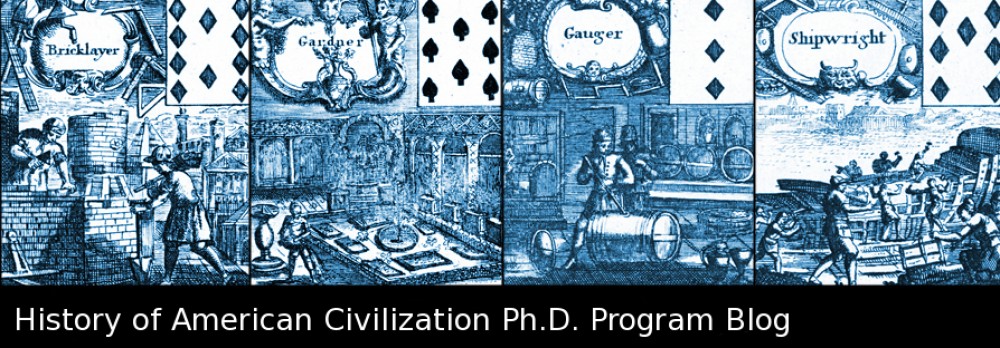On the first weekend in November, I attended the first conference of the Association of Registrars and Collections Specialists (ARCS) in Chicago. I am grateful that the History Department provided professional development funding to help with the cost.
The ARCS conference included twenty-four sessions over three days, interspersed with lunches, coffee breaks, and evening receptions. Since more than 500 people attended the conference, these events acted as networking events. I tried to introduce myself to five new people every day, and in this way I met registrars and art handlers from museums across the country.
I enjoyed all the sessions I attended, because I felt like they would be professionally helpful for me at my future job or because they dealt with some aspect of the work I was not familiar with or wanted to know more about. For instance, registrars from the Andy Warhol Museum in Pittsburgh talked about their integrated pest management program in terms of the discovery of a massive infestation discovered during their cataloguing process. This brought pest management, a general topic I feel fairly comfortable having a conversation about, into a new plane of consideration: how to deal with an infestation in an uncatalogued collection, how to address the infestation without disrupting the cataloguing process, and how to organize and implement a pest management system in the midst of a crisis. Plus, they showed slides of insects devouring non-traditional museum collection objects that The Warhol has, like dog biscuits or half-eaten cookies. These slides were revolting and informative.
I also attended a session on transporting works of art to Italy. While this is irrelevant to my current position, I hope I get to use this knowledge in the future, because it would mean I was working at a place that exchanged artworks with Italy. When that happens, I will know to write a clause into the insurance agreement that allows the artwork to be pulled behind a tractor or transported by gondola, methods that insurance agreements typically discourage.
The most useful session covered the uses of new technology like iPads for registrars. Besides introducing us to several helpful applications, the speakers described a beautifully brief process for taking condition reports that went from taking incoming photography to saving the final report on the computer without having to leave the object’s side. Other suggestions included attaching RFID labels to packing crates of traveling exhibitions that uploaded a video of handling or mounting procedures when scanned and using collaborative software to track workflow. I have already started using some of the ideas from this session in my work at Winterthur, where I have had a graduate assistantship in the Registrar’s Office since 2010.
ARCS has a student membership rate, and they host networking events in the area, too. Anyone who is interested in more information can visit their website, www.arcsinfo.org. The next conference will be in 2015.
About the author: Alyce Graham is the Student Assistant to the Registrar at the Winterthur Museum and a fourth-year Ph.D. candidate writing about hardship and suffering in nineteenth-century polar exploration.

